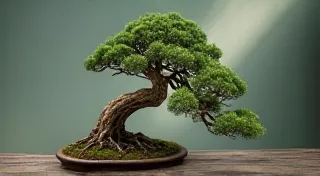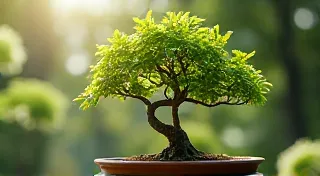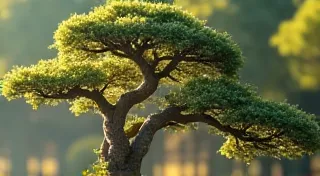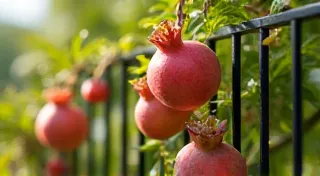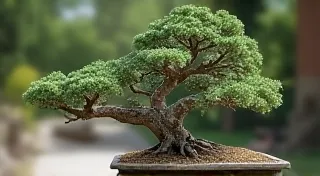Japanese Maple 'Bloodgood' Bonsai: A Guide to Intense Color
The Japanese Maple,
‘Bloodgood’ was introduced in 1986 by J.D. Hooker and is prized for its reliability – its rich red color persists throughout the growing season, even in warmer climates where other red maples can fade. It’s also known for its relatively compact growth habit, making it well-suited for bonsai. Many bonsai enthusiasts appreciate the challenge of shaping these trees, exploring techniques that showcase their natural beauty and resilience. Understanding the fundamentals of bonsai cultivation is crucial, and the intricate web of root systems plays a surprisingly important role. Exploring the silent dialogue of root systems can reveal insights into the overall health and vigor of your tree.
‘Bloodgood’ Japanese Maples thrive in partial shade, especially during the hottest part of the day. Direct, intense sunlight can scorch the leaves, dulling their color. Morning sun and dappled afternoon shade are ideal. Indoor cultivation is possible, but requires careful attention to light and humidity. The interplay of light and shadow contributes to the tree's aesthetic appeal and directly affects the intensity of its color, making careful observation essential.
Consistent moisture is key. Water thoroughly when the top inch of soil feels dry. Avoid letting the soil dry out completely, but equally, avoid waterlogging, which can lead to root rot. Reduce watering frequency during dormancy (winter). The frequency will depend on your climate and the pot size. Proper watering also plays a role in the overall vigor of the tree, which can impact its ability to produce vibrant new growth.
Use a well-draining bonsai soil mix. A good mix might consist of akadama, pumice, and lava rock in equal parts. Repotting is typically required every 2-3 years, ideally in early spring before new growth emerges. When repotting, trim back some of the roots to promote compact growth. Maintaining the right soil composition is critical for bonsai health, and this principle extends to other bonsai varieties too – for instance, cultivating a fig bonsai requires a slightly different approach to soil and propagation.
Fertilize regularly during the growing season (spring through fall) with a balanced bonsai fertilizer. Follow the manufacturer's instructions carefully, and avoid over-fertilizing, which can lead to weak growth. Reduce or stop fertilizing during dormancy. Balanced nutrition is key to sustaining the vibrant foliage of your 'Bloodgood' Japanese Maple.

Regular pruning is essential for maintaining the desired shape and size of your 'Bloodgood' bonsai. Pinch back new growth to encourage branching. Wiring can be used to shape branches and create a more artistic appearance, but it must be done carefully to avoid damaging the tree. Remove the wire before it bites into the bark. The art of bonsai extends beyond the practicalities of care; it's about capturing a sense of fleeting beauty and permanence simultaneously, a philosophy mirrored in other bonsai projects.
‘Bloodgood’ Japanese Maples are relatively cold-hardy, but protecting them from harsh winter conditions is important. In colder climates, consider moving your bonsai to a sheltered location, such as an unheated garage or greenhouse. Ensure adequate ventilation to prevent fungal diseases. Preparing for dormancy is crucial; the anticipation of spring blooms adds another layer of appreciation for the entire bonsai journey.
*

To achieve the deepest, richest red color, ensure the tree receives adequate sunlight (but avoid scorching), provides proper watering and fertilization, and protects it from extreme temperatures. Cooler temperatures in the fall can intensify the red color even further. A period of dormancy is vital for healthy leaf coloration. Many bonsai enthusiasts find that a deep understanding of seasonal changes is vital for appreciating the entire bonsai experience, similar to capturing the delicate beauty of ephemeral kingdoms and fleeting blooms.
The vibrant red coloration of 'Bloodgood' Japanese Maples is a result of anthocyanin pigments, which are produced in response to cooler temperatures and bright sunlight. These pigments mask the green chlorophyll during the fall, revealing the underlying red hues. Understanding this process can help bonsai enthusiasts manipulate environmental conditions to enhance color intensity. The interplay of temperature, sunlight, and nutrient availability can profoundly impact the vibrancy of your bonsai.
While proper care provides a solid foundation for vibrant color, some advanced techniques can further enhance the red intensity. Experimenting with reflective surfaces near the tree can help maximize light exposure, particularly in areas with limited sunlight. Ensuring the tree experiences a significant temperature drop in the fall promotes anthocyanin production. Careful observation of leaf coloration is key to fine-tuning these techniques. Different bonsai species react differently to these adjustments, such as the nuanced care required for a dwarf pomegranate bonsai and its fruity delights.
Cultivating a ‘Bloodgood’ Japanese Maple bonsai is a rewarding experience. Its stunning color, graceful form, and relatively easy care make it an excellent choice for both novice and experienced bonsai enthusiasts. With patience and attention to detail, you can enjoy the beauty of this iconic bonsai species for years to come. The journey of bonsai cultivation is not just about shaping a tree; it’s about cultivating patience, observation, and a deep appreciation for the natural world.

